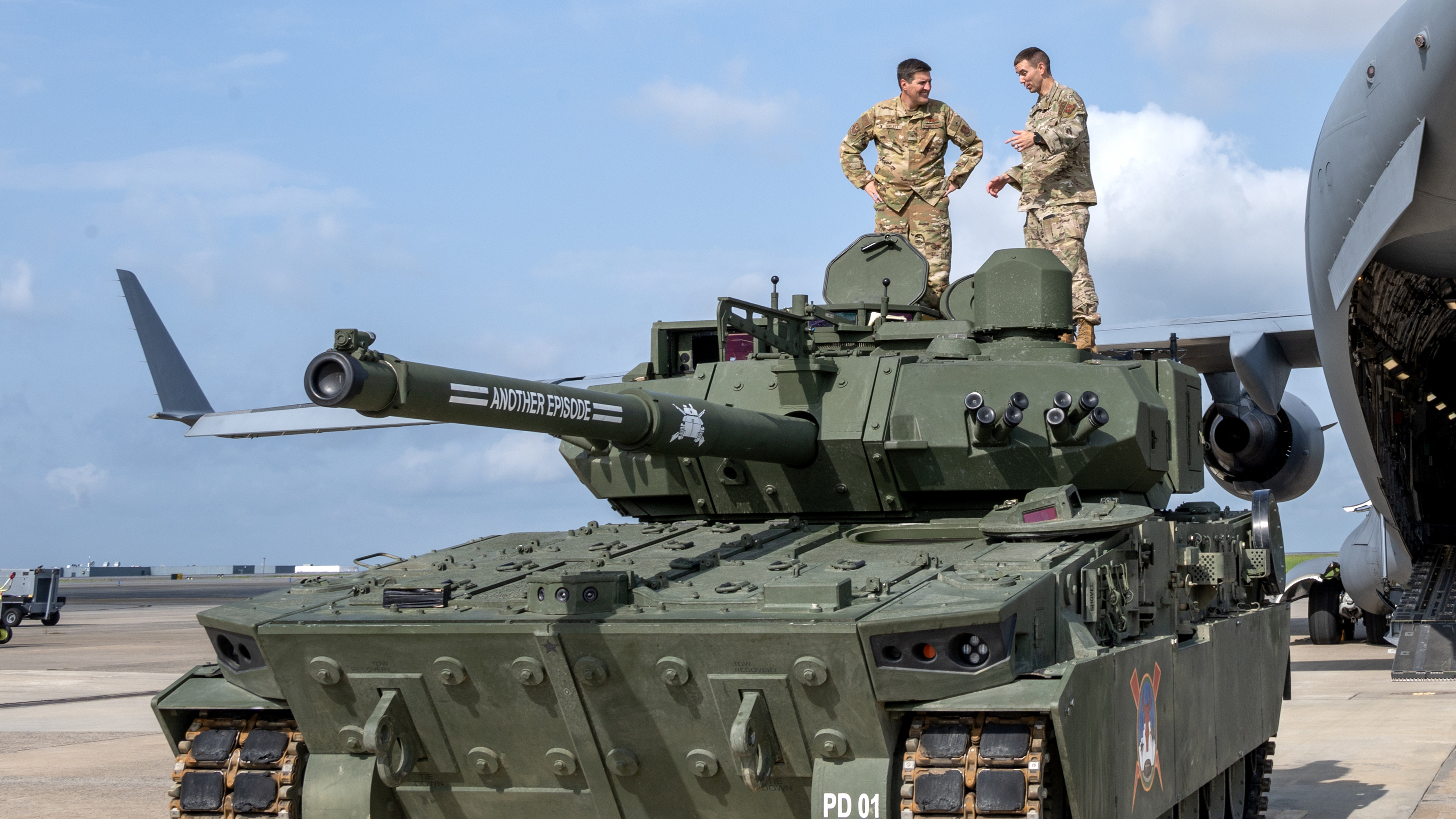

The Army has officially killed further delivers of the M10 Booker, canceling not just a billion-dollar program to build a heavily-armed vehicle for fast-moving infantry units, but also putting a final answer to an age-old question: is the M10 Booker a tank?
“Now that we’re canceling, you can call it whatever,” Army Secretary Dan Driscoll told reporters Friday, confirming the program’s end.
Cancelling the Booker matches one element of an overhaul ordered by Secretary of Defense Pete Hegseth in how the Army develops and buys weapons.
In a 4-page memo released April 30, he ordered the service to “divest outdated formations, including select armor and aviation units across the Total Army.”
That apparently included the Booker, which discussed Driscoll Friday.
“We got the Booker wrong,” said Driscoll, adding that the Army already has taken delivery of roughly 80 of the tanks. “We wanted to develop a small tank that was agile and could do [airdrops] to the places our regular tanks can’t.”
But the Booker, at 38 tons, can’t be airdropped.
“We got a heavy tank,” said Driscoll. “What’s historically happened is we would have kept buying this to build out some number of Bookers, and then in decades in the future we would have switched. Instead, we went to the Pentagon leadership and we said, ‘we made a mistake, this didn’t turn out right. We’re going to stop. We’re going to own it.’”
Right to Repair
Another issue that irked both Army officials and lawmakers stuck with the bill for the Booker was the so-called Right-to-Repair terms in its maintenance plans. The contract under which the Booker was purchased required that the Army use the Booker’s builder, General Dynamics, to address a wide range of parts and maintenance issues that Army mechanics could have addressed on their own.
“If you look at kind of comparable industries for the civilian sector, I think tractors went through this five, eight years ago,” said Driscoll. “You had farmers who were having a hard time repairing their equipment. The exact same thing is true for soldiers. We have many instances where, for two dollars to twenty dollars, we can 3D-print a part. We know how to 3D print a part. We have the 3D printer, but we have signed away the right to do that on our own accord, and that is a sinful activity for the leadership of the Army to do to harm our soldiers. And so that is the type of thing that we are no longer going to be willing to concede to the private industry.”
Sen. Elizabeth Warren was a particular critic of the Booker’s Right-to-Repair language, citing it in Driscoll’s January confirmation hearing.
“When right-to-repair restrictions are in place, it’s bigger profits for giant defense contractors, but also higher prices for DoD and longer wait times for service members who need to get equipment repaired so they’re ready to go,” Warren said in the hearing.
Named for two Armor heroes
The tracked M10’s armament includes a 105mm main gun, a coaxial 7.62mm machine gun, and a .50 caliber machine gun. At under 40 tons, it is light enough that an Air Force C-17 can fly two of them, versus the plane’s limit of a single M1 Abrams at a time.
The M10 was the first major weapons system in the U.S. military named for a service member from the post-9/11 wars. The name Booker honors two soldiers killed in combat, including one from the initial invasion of Iraq in 2003. Staff Sgt. Stevon A. Booker was a tank commander posthumously awarded the Distinguished Service Cross for his actions during the Thunder Run raid on Baghdad that opened the Iraq war. Pvt. Robert D. Booker, an infantryman in World War II, was posthumously awarded the Medal of Honor for heroism in combat in Tunisia in 1943.
Developed beginning in 2018 as the Next Generation Combat Vehicle, the Army awarded a $1.14 billion contract to General Dynamics in June 2022 to build the first 96 vehicles for the service.
The Army planned to buy roughly 500 of the tanks, with the goal of equipping each of the service’s Infantry Brigade Combat Teams with 14 of them.
